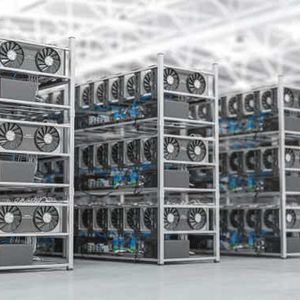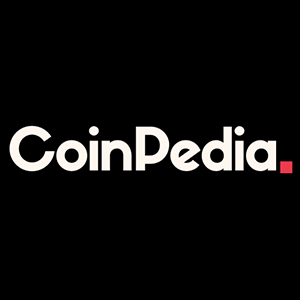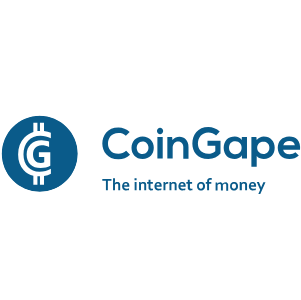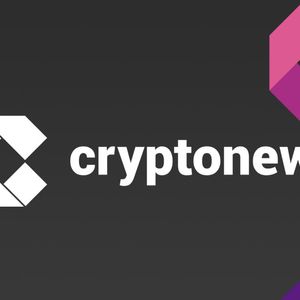

Marathon Digital: The All-Round Vertically Integrated Bitcoin Miner (Rating Upgrade)
Summary Marathon Digital stock peaked at $76 per share in November 2021, currently trading at around $19 with a 175% dilution in shares outstanding. The current price could be an attractive entry. Efficiency in Bitcoin mining operations is crucial post-halving, with Marathon Digital showing the least reduction in monthly BTC production among publicly traded miners, this adds to the stock's attractiveness. Marathon Digital introduces a two-phase immersion cooling system, potentially revolutionizing cooling solutions in data centers and Bitcoin mining operations. Marathon Digital (MARA), the well-known Bitcoin ( BTC-USD ) miner, reached a peak price during the last Bitcoin bull market, at around $76 per share in November 2021. The stock currently trades at around $19. Shares outstanding at the November 2021 high were 102.63 million shares, while shares outstanding today are 282.79 million shares. There has been a 175% dilution since November 2021. Reaching the previous all-time price at the current number of shares would mean a market cap of around $21.5 billion. This is around the combined market cap of all U.S.-listed Bitcoin miners. This is worth noting before moving into the rest of this article. The last Bitcoin bull run followed the third halving event in 2020, and many investors and analysts consider the halving event a strong catalyst for a Bitcoin price rally. The fourth Bitcoin halving event took place two months ago, and this sentiment of a price rally ahead is strongly shared among Bitcoin investors. A Bitcoin price rally typically extends to Bitcoin-linked stocks. During a Bitcoin bull market, Bitcoin companies that have shown efficiency in operations, good financial performance, or launched innovative products and services easily pick up on the Bitcoin-driven momentum. BTDR CLSK CORZ BITF MARA Jan. - Apr. average BTC mined ~292 ~687 ~907 ~303 ~915 May (post-halving) BTC production 184 417 448 156 616 Post-halving percentage -/+ -37% -39% -50% -48% -32% Following the recent halving event, miners have seen their monthly BTC production reduced (the halving event slashed block rewards in half). Marathon Digital’s post-halving efficiency is worth noting; the company was the least impacted by the halving in terms of monthly BTC production, following the operations updates released by miners in May. MARA’s production declined by ~32% compared to the average BTC produced between January and April - the lowest reduction in production among publicly traded Bitcoin miners. I've covered Marathon Digital two times in the past, the first coverage was in August last year and the second was in January. I was bearish on MARA in my August article due to the over 300% YTD non-catalyst-driven price surge the stock recorded at that time; however, in January , I saw the potential in the surge in transaction fees on the Bitcoin network as Bitcoin Ordinals were recording heightened activities, and I highlighted how Marathon Digital stood to gain from the heightened Ordinals activity (considering Marathon Digital runs its own mining pool), not also forgetting the momentum that was building around the spot Bitcoin ETF approval. Based on these factors, I gave MARA a rating upgrade to “hold” in January. After the halving event, Marathon has proven a high level of efficiency and continues to work towards all-round vertical integration. Marathon Digital’s approach to mining operations efficiency is somewhat unique. The miner uses proprietary technology across software, firmware, and hardware, thus controlling several critical business variables for favorable operations. The latest addition to Marathon’s proprietary tech stack is its next-gen immersion cooling solution. Most analyses of BTC miners focus mainly on hashrate growth and electricity capacity, covering metrics like mining rigs output and the miner’s energy capacity (Th/s and MW). The effects and importance of efficient cooling systems for effective mining operations often take a back seat. I, however, consider cooling as a dark horse in Bitcoin miners’ operational effectiveness. Marathon Digital Spearheads Two-phase Immersion Cooling in Bitcoin Mining Marathon Digital is a company that has always been big on optimization in both hardware and software, and this has set the company apart among Bitcoin miners. The company unveiled a two-phase immersion cooling (2PIC) system - the 2PIC700 tank at the Empower Conference in late March, in Houston - as an addition to its proprietary tech stack. There is a growing market demand for enhanced cooling solutions (like immersive cooling) driven by the increasing need for higher processing speeds and overclocking capabilities in high-performance computing (HPC) clusters used mainly for AI processing. Modor Intelligence Reports by market researchers suggest that the immersion cooling market in data centers will grow by ~26% CAGR between 2024 and 2029, reaching a $2.9 billion market size from the current ~$790 million market size. Note that this growth projection specifically focuses on immersion cooling adoption within HPC data centers. Edge data center market growth (Precedence Research) Other emerging tech sectors, like edge AI and IoT systems, could also very much see two-phase immersion cooling adoption at the edge; hence, the potential market size is much larger. The edge data center market size is projected to grow at around 18% CAGR, to reach a $60 billion market size by 2033, according to Precedence Research. Edge computing involves processing data in real-time near the data source; hence, the need for very fast processors in a constrained space. 2PIC gives the ability for computing power to be packed into a much smaller space while maintaining optimal chip temperature. The immersion cooling technique has been around for a while and has already witnessed some adoption in cloud data centers as well as in the Bitcoin mining sector. Alibaba ( BABA ) adopted immersion cooling for its data centers some years ago and has reportedly achieved better efficiency, recording a lower Power Usage Efficiency (PUE) at some of its data centers that have implemented immersion cooling. Currently, the well-known and widely-used immersion cooling technique is the single-phase immersion cooling (SPIC). In SPIC, computer components or ASIC miners (in the context of Bitcoin mining) are submerged into a single-phase hydrocarbon dielectric liquid coolant. The process is called single-phase because the liquid coolant doesn't change its state in the cooling process. The primary advantage of SPIC is its much higher power density compared to non-immersive cooling techniques. Cooling units efficiency and power density curve source (Open Compute Project) The graph above is from a presentation at the Open Compute Summit in 2018, comparing efficiency and power density among different cooling units. Here we see immersion cooling has the lowest PUE (best efficiency) and the highest power density (highest capacity). Single-phase and two-phase immersion cooling illustration (Marathon Digital) The latest iteration of immersion cooling is 2PIC. Just like SPIC, the 2PIC technique involves submerging computer components or ASIC miners (in the context of Bitcoin mining) into fluorinated dielectric fluid or coolant. The fluoride liquid cools the ASIC miners in a purpose-built tank. As heat is generated by the miners, the coolant absorbs latent energy, causing some of the fluoride liquid to transition into a gaseous state. Water-cooled coils acting as condensers at the top of the purpose-built tank condense the gaseous fluorinated fluid back into its liquid form, allowing it to return to the bottom of the tank for the cooling cycle to continue. This method, involving the change of state of the coolant, creates a more efficient cooling solution over SPIC. Fluorinated fluids in a gaseous state require less energy to cool back to liquid form compared to the cooling of hydrocarbon oils or coolants in the SPIC technique. In Bitcoin mining, improved cooling directly translates to higher realized hashrate as mining rigs will perform at their optimum if adequately cooled. Also, the adoption of immersion cooling in mining facilities significantly reduces overhead power consumption by minimizing the need for additional components that draw extra energy, such as large fans, external pumps, or heat exchangers, which are core components in air-cooled and hydro-cooled setups, giving the facility a better PUE and potentially translating into improved operational cost efficiency in the long-term. 2PIC700 overclocking calculation (Marathon Digital) The above image, showing data from the 2PIC700 calculator tool on Marathon Digital’s website, shows material changes in the output capacity of BITMAIN’s Antminer T21 when it is cooled through the MARA 2PIC700 tank. On the “2PIC Overclock 1” column, the miner is overclocked (explain overclocking) by 56%. This resulted in a ~54% hashrate increase from the original 190 TH/s output. Though the mining efficiency dropped by around 13% from 19 J/Th to 21.5 J/Th, the hashrate increased by around 54% to 293 Th/s. A higher overclocking at 85% results in mining efficiency dropping from 19.0 J/th to 23.5 J/th (a ~23% decrease in efficiency) while hashrate increases by an impressive 85% to 352 Th/s. This is a very favorable trade-off between mining efficiency and hashrate. I believe that in seeking alpha in tech stocks, understanding a relatively lesser-known technology, its potential applications, and its disruptive impact allows investors to stand out early and stay ahead of the pack. I believe that the unveiling of Marathon Digital's 2PIC tank has not yet been fully priced into MARA, as the market appears to underestimate its potential as a catalyst for both the stock and the company’s growth. While analysts at JPMorgan still maintain their underweight rating for MARA , I take a bullish view. As I mentioned earlier, cooling metrics are typically considered ancillary by investors and analysts in analyzing Bitcoin miners. Other Noteworthy Latest Highlights on Marathon Digital ...as the BRC-20 ecosystem continues to grow, it will potentially bring higher fees to miners. As stated earlier, transaction fees become a relatively important part of a miner's earnings when block rewards get cut in half during halving. MARA is well-positioned to make the most of transaction fees post-halving because it owns and operates a self-mining pool. MaraPool represented more than 22% or about 380 BTC of MARA’s total Bitcoin production in December. This bodes well for MARA. Excerpt from my last MARA coverage. Since the fourth halving event in April and the ensuing slashing of block rewards in half, transaction fees have become an important part of miners’ revenue, in addition to block rewards. Miners’ revenue from transaction fees has grown immensely since the advent of the capability to add raw binary data called inscriptions on the Bitcoin network. These inscription transactions (which include multimedia and software files) have large byte data so they typically command higher fees. Inscriptions are like “NFTs” on the Bitcoin network. MARA Pool 0.85 inscription fee (TheMinerMag - Bitcoin Mining News, Data, Research and Analysis) Marathon Digital came in prepared for the halving, rightly anticipating the surge in transaction fees that would follow the halving’s reduction in block rewards. Marathon launched Slipstream in February - a Bitcoin Layer-2 service that allows direct and seamless submission of arbitrary data on the Bitcoin network, allowing users to send such transactions directly to Marathon Digital’s mining pool. I believe this is one of the factors that made Marathon Digital emerge as the least impacted miner by monthly BTC production after the halving event. That's impressive management prudence and foresight right there, in my view. It is worth mentioning that Slipstream service has attracted some criticism from a faction of the Bitcoin community who cited the possibility of transaction censorship as this goes against the Bitcoin network’s core ethos of total decentralization. Last week, Marathon Digital received a 0.85 BTC fee through its mining pool, MARA Pool, to inscribe a video on a Bitcoin transaction. MARA Pool included only 3 transactions in the block where this inscription was recorded and the 0.85 BTC inscription fee was much higher than the average 0.22 BTC fee recorded by other pools despite their processing an average of 4,500 P2PKH transactions (regular transactions) per block. In the heat of a full-blown crypto bull market (likely imminent) where NFTs regain their lost hype, I expect more of these types of fees. Marathon controls its own mining pool MARA Pool, runs its own firmware ( MARAFW for optimized mining), is actively involved in the research and design of more efficient mining hardware (like the UCB 2100 replacement control board for BITMAIN Antminers), and is spearheading a next-gen cooling system. This level of involvement in every facet of its operation makes Marathon Digital an all-round vertically integrated Bitcoin miner. From a capacity and financial standpoint, Marathon Digital has recorded expansion and growth. In the Q1 CY24 financial reported a 184% increase in net income at $337 million or $1.26 per diluted share. The MARA management has shown some divergence from their previous strategy of leasing electricity to run mining operations. The company added 516 MW of electricity and now has a total of 1.1 GW capacity, of which it now controls 54% compared to just 3% of electricity control at the end of Q4 last year. This expansion makes the near-term target of 50 exahash by the end of this year much achievable. I believe that the timing of this capacity expansion would be accretive for the company. Risks There remains the possibility that 2PIC may not be adopted as the go-to data center cooling tech in the long run. New iterations of other existing cooling methods, like hydro-cooling, could emerge and prove equally efficient or cost-effective to set up. As reiterated by analysts covering Bitcoin-linked stocks on Seeking Alpha, these stocks exhibit high volatility because they are directly linked to a highly speculative and volatile asset. Investing in Bitcoin stocks comes with an inherent volatility risk. Takeaway Control your own destiny or someone else will. - Jack Welch I believe that Marathon Digital has the potential to achieve an unparalleled level of efficiency compared to peers with this level of all-round vertical integration. Bitcoin has become mainstream and Bitcoin mining is no longer the fledgling industry that it was once considered to be. Miners that control their own business variables through vertical integration have a high competitive advantage over peers at this stage of the market lifecycle. MARA is down about 27% since my last article in January with a “hold” rating. The current stock price is an attractive entry. The post-halving momentum and rally are building up for Bitcoin and this momentum will most likely spread to efficient miners with healthy financial standing like MARA.










